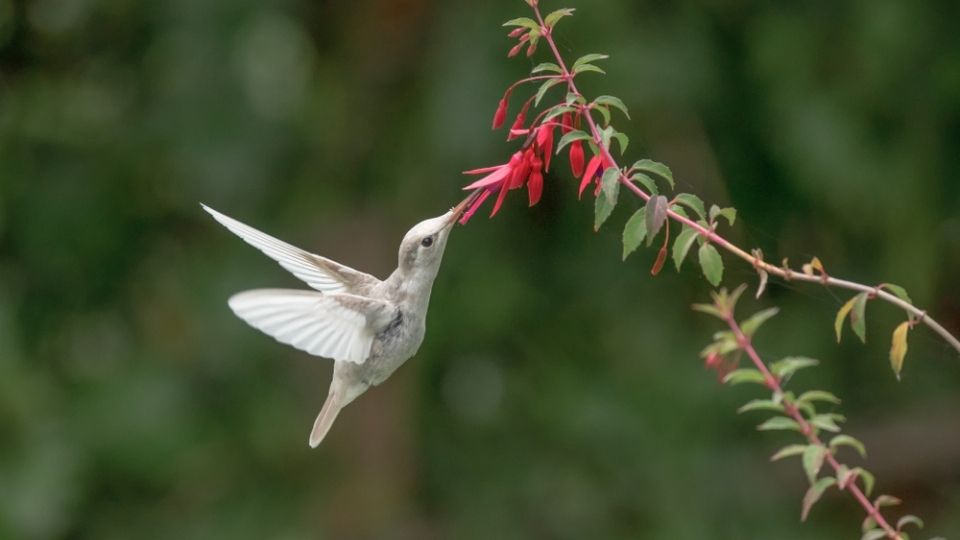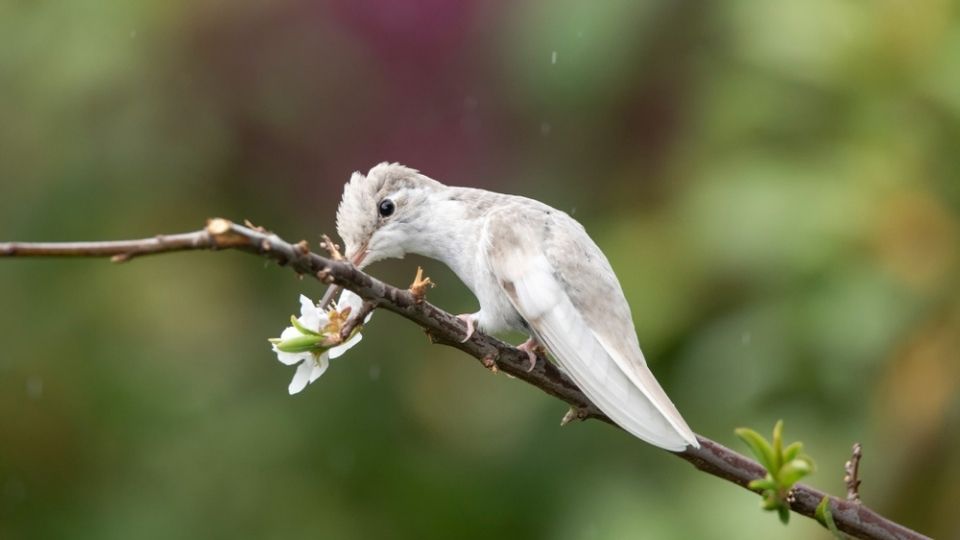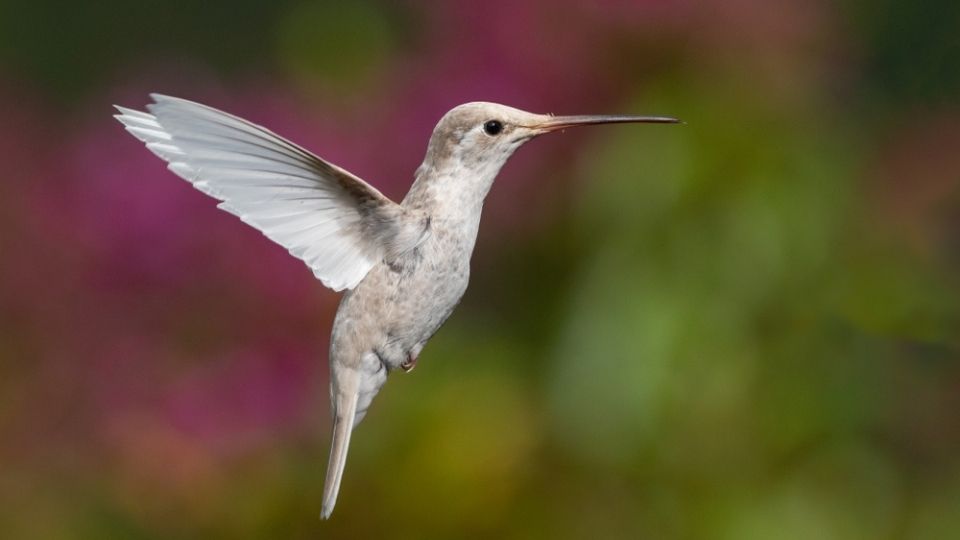Albinism is a genetic mutation that produces little or no pigmentation in the skin, hair, and eyes. The amount of pigment they can't produce can vary significantly between albino birds. Some may not have any coloring, while others may get just a little bit. So albinism is not always the complete absence of pigment.
Hummingbirds are known for their dazzling gorget plumage, colors, and patterns, so what could be more fascinating to birders than a bird that doesn’t have any? That’s where albino hummingbirds come in.
Table of Contents
Confessions of an albino hummingbird
I am an albino hummingbird.
I am known to be a difficult-to-find and rare bird.
The only other albino hummingbird I have ever encountered was my mother. I think about her often and wonder where she is now.
It’s lonely to be the only one you know of your kind – it almost makes you feel like an alien or an anomaly. Speaking about that, I have been told I actually have an anomaly. I stand out in a crowd, and as much as I would love to blend in, I am different.
My eyes are pink or red. The rest of my body is pure white – so I am primarily a white bird. Some people are in awe when they see me; they tell me they’ve never seen something so spectacular. Yet I don’t feel special.
My wings are fragile and can break if mishandled. They’re not made for the long travels my peers engage in so often.
As such, I am at the mercy of the elements most of the time. I wish I could have a safer place than out in the wild, where so many predators are lurking about, ready to take advantage of me if they can spot me first!
It’s not just my color that makes me different from the other hummingbirds—it’s also the way I behave. The regular hummingbirds fly around here and there all day long, but I need to take a break every once in a while to rest up for another flight. It’s exhausting!
And then there’s my vision… well, let’s say it isn’t nearly as good as it needs to be for me to survive out in nature.
I don’t get along with any of my peers either. They do not take kindly to me being different than them because they feel threatened by my presence, leading them to attack me when they see me fly into their territory.
Researchers have seen almost 100 species of albino hummingbirds, indicating that white albino hummingbirds are rare. Most were spotted in North, Central, and South America.
Luckily, some of our little feathered friends have shown a remarkable ability to adapt to survive despite suffering from albinism.
Here I am: standing alone at the edge of a flowerbed, bathing in the glory of being uniquely beautiful and rare. If you find me when you’re out in nature taking pictures, then take a picture of me (or videos if you feel like it). That way, the world can at least see my beauty.
Oh, and I wouldn’t mind eating a little bit of that nectar you have laying around in that
By Alexandra Craciunhummingbird feeder in your garden – It would help with my energy level!

Notable sightings
- White Ruby-throated Hummingbird seen in Muskogee, Oklahoma (August 2019)
- Rare albino ruby-throated hummingbird discovered in Northeast Ohio – in someone’s backyard
- A Leucistic Ruby-throated Hummingbird was spotted in Laurens, South Carolina (August 2021)
- A leucistic Anna’s hummingbird at the Australian Garden at the University of California, Santa Cruz Arboretum
- A white hummingbird was spotted near a house in Cordova, Alabama (August 2019).
Hummingbird photos
You can see photos of true albino hummingbirds or white leucistic hummingbirds here.
Types of albino hummingbirds
We can split these rare albino hummers into three types:
Albino hummingbirds
Albino hummingbirds have a completely white body. The wings are white, the feathers thin. Their pink eyes, feet, and bills stand out from their peers.
Leucistic hummingbirds
Birds suffering from leucism have black eyes, feet, and bills, but other than that, their bodies are also white with dark streaks. This is because leucistic hummers still produce melanin, but it doesn’t show in their feathers.
Pied hummingbirds
Piebald hummingbirds have melanin missing only partially. As a result, their feathers are white (where the pigment is missing) with colored patches (typically gray or green).

Downsides of being an albino hummingbird
While these rare white hummingbirds look spectacular and are a feast for the eyes, they can experience significant drawbacks of being born with albinism. White feathers are more prone to breakage during migration. This can pose serious issues, considering that albino hummingbirds might not be able to survive the migration to Central America or Mexico – like their peers, and thus, unable to survive winter.
They can’t camouflage themselves – the colors of hummingbirds may help them be better at disguising and keeping themselves safe from predators. Since they are easily identifiable, they can be easy prey. Rejection by peers and mates – Males are less likely to attract females; part of the male’s courtship moves involved flaunting that iridescent, colorful gorget. Male albino or leucistic birds don’t have that advantage.
Albino hummingbirds may be more susceptible to diseases and the environment. Melanin helps with ultraviolet sun protection – when it’s missing, the protection is significantly reduced. Albino birds’ eyes are most sensitive to the sun than regular hummingbirds. Because of that, it may be harder for them to find food sources because their decreased sight slows them down.

